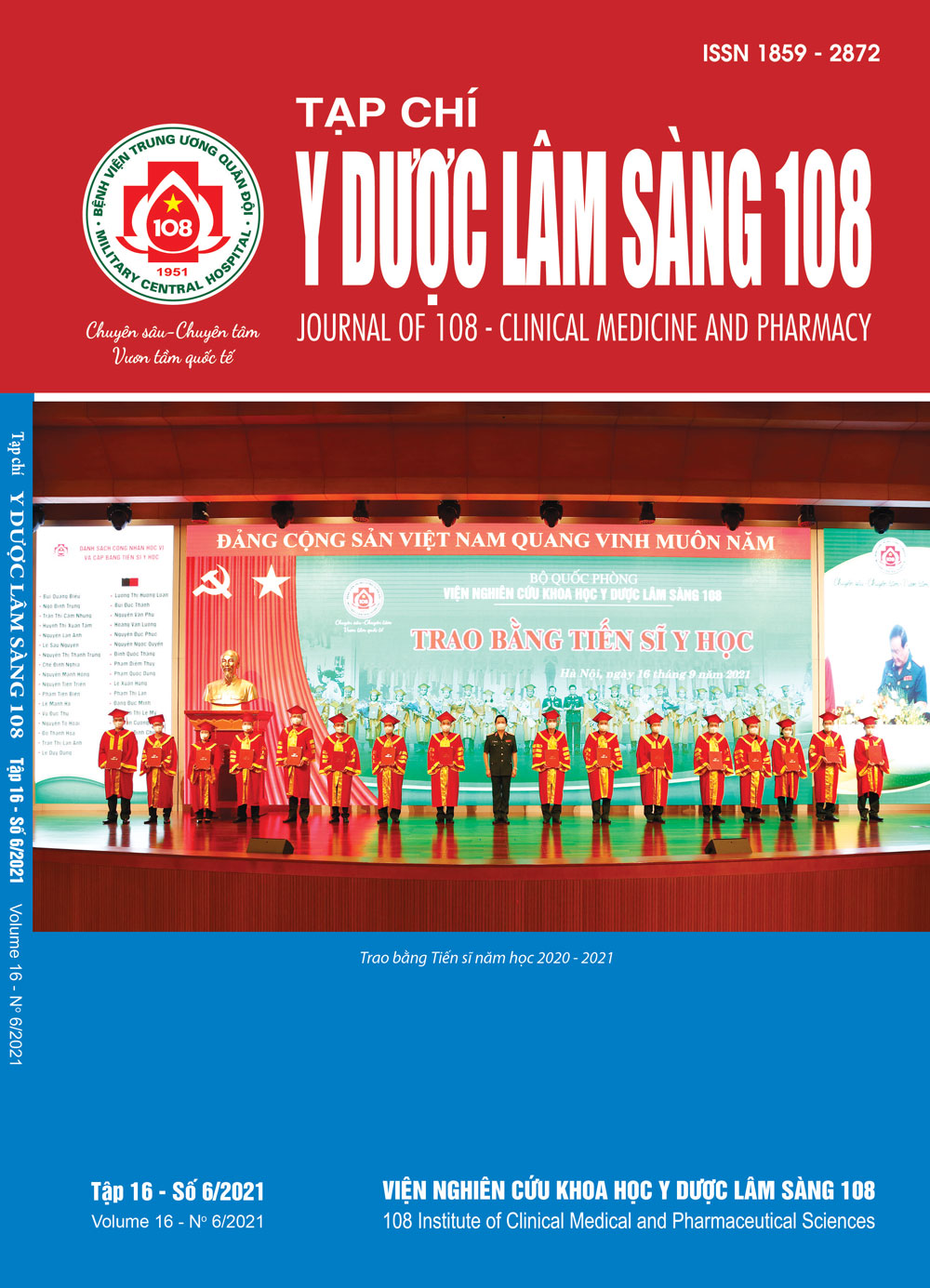Outcomes of bronchial artery embolization following MDCT angiography in hemoptysis patients
Main Article Content
Keywords
Abstract
Objective: To evaluate utcomes of bronchial artery embolization following multidetector computed tomography (MDCT) angiography in hemoptysis patients. Subject and method: It is a prospective study which included 40 hemoptysis patients at Emergency Department and Pulmonary Tuberculosis Department, Vietnam National Lung Hospital from February 2020 to February 2021. Patients were divided into 3 groups based on the hemoptysis cause: Tuberculosis (group 1, n = 18), bronchiectasis (group 2, n = 15) and Aspergilloma (group 3, n = 7). All patients reiceived MDCT angiography, followed by bronchial artery embolization (BAE). After that, they have been followed-up to evaluate the clinical outcomes. Result: The most common age was between 30 - 45 years old in group 1, over 60 years old in group 2 and group 3. Moderate and severe hemoptysis predominated, 42.5% and 37.5%, respectively. Outcomes of BAE: Immediate clinical success rate was 97.5%, the rate of reccurent hemoptysis in the first 3 months was low (2.6%), total reccurence rate was 12.8% with average follow-up duration was 6.1 ± 1.2 months. Conclusion: BAE following MDCT angiography is highly effective.
Article Details
References
2. Yoon YC, Lee KS, Jeong YJ et al (2005) Hemoptysis: Bronchial and nonbronchial systemic arteries at 16-detector row CT. Radiology 234(1): 292-298.
3. Panda A, Bhalla AS and Goyal A (2017) Bronchial artery embolization in hemoptysis: A systematic review. Diagn Interv Radiol 23(4): 307-317.
4. Bộ Y tế (2013) Hướng dẫn Quy trình kỹ thuật Chẩn đoán hình ảnh và điện quang can thiệp, tr. 859-862.
5. Hà Thị Tuyết Trinh (2013) So sánh một số đặc điểm lâm sàng, cận lâm sàng ho ra máu do lao phổi mới và lao phổi đã điều trị tại Bệnh viện Phổi Trung ương. Tạp chí Y học thực hành, 10, tr. 78-80.
6. Ngô Thanh Bình và Phạm Văn Đồng (2012) Kỹ thuật thuyên tắc động mạch phế quản trong điều trị ho ra máu nặng. Tạp chí Y học TP Hồ Chí Minh, 4, tr. 187-196.
7. Tạ Bá Thắng, Đỗ Quyết, Đồng Khắc Hưng và CS. (2007) Gây tắc động mạch phế quản điều trị ho ra máu ở một số bệnh phổi phế quản tại Khoa Lao và bệnh phổi Bệnh viện 103. Tạp chí Y dược học Quân sự, 1, tr. 109-115.
8. Ngô Đình Trung Đồng Khắc Hưng, Đỗ Quyết và cộng sự (2008) Kết quả gần điều trị ho ra máu bằng gây tắc động mạch phế quản. Tạp chí Y dược học Quân sự, 33, tr. 10-15.
9. Bhalla A, Kandasamy D, Veedu P et al (2015) A retrospective analysis of 334 cases of hemoptysis treated by bronchial artery embolization. Oman Med J 30(2): 119-128.
10. Tạ Bá Thắng, Lê Tuấn Anh và Phạm Văn Thìn (2008) Nguyên nhân và đặc điểm lâm sàng, hình ảnh chụp cắt lớp vi tính, nội soi phế quản ở bệnh nhân ho ra máu sau lao phổi. Tạp chí Y học thực hành, 5, tr. 101-103.
11. Sopko DR and Smith TP (2011) Bronchial artery embolization for hemoptysis. Semin Intervent Radiol 28(1): 48-62.
12. Li PJ, Yu H, Wang Y et al (2019) Multidetector computed tomography angiography prior to bronchial artery embolization helps detect culprit ectopic bronchial arteries and non-bronchial systemic arteries originating from subclavian and internal mammary arteries and improve hemoptysis-free early survival rate in patients with hemoptysis. Eur Radiol 29(4): 1950-1958.
13. Dư Đức Thiện (2001) Nghiên cứu hình thái động mạch phế quản trong một số bệnh phổi mạn tính và khả năng gây tắc mạch điều trị ho ra máu. Luận án Tiến sĩ Y học, Đại học Y Hà Nội.
 ISSN: 1859 - 2872
ISSN: 1859 - 2872
